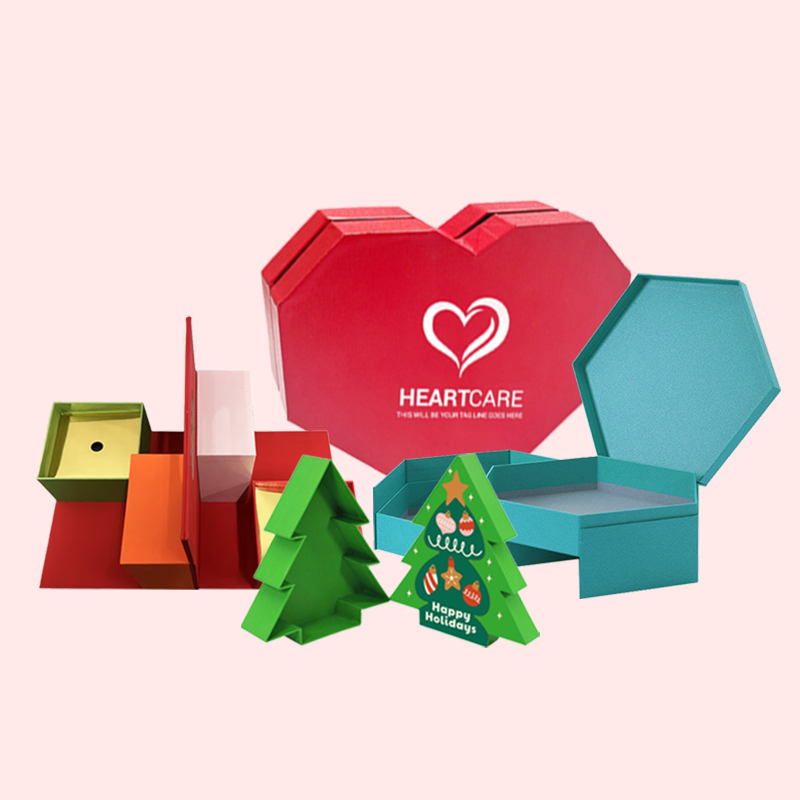Struggling to pick the right custom packaging? A wrong choice can damage your brand and waste money. I'll guide you through the key factors to make the perfect decision.
Choosing the right custom packaging involves understanding your product, brand, and customer. You must consider protection, budget, and sustainability. Balancing these elements ensures your packaging is effective, memorable, and aligned with your business goals. It's about finding the perfect blend of function and form.

Getting the big picture is a great start. But the details are where your packaging really comes to life. In my 16 years in this industry, I've seen many designers, like Peter, focus on a few key frameworks to guide their process. These frameworks simplify complex decisions and ensure no crucial element is overlooked. Let’s dive into the first one, a classic tool in marketing and packaging.
What are the 5 P's of packaging1?
Ever feel like your packaging checklist2 is missing something? Forgetting a key element can lead to poor results. Let's cover the 5 P's, a simple framework for success.
The 5 P's of packaging1 are: Protection, Preservation, Portability, Presentation, and Price. These principles guide you to create packaging that not only looks good but also functions perfectly, protects the product, is easy to handle, and meets your budget3.
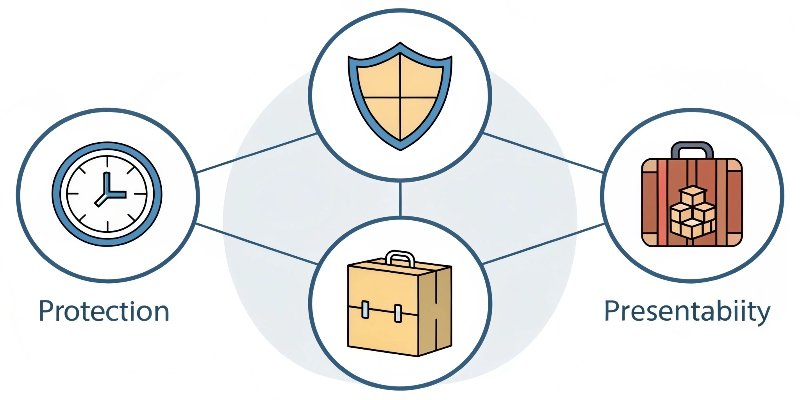
This framework has been a lifesaver for me on many projects. It forces you to think about the whole picture. You can't just focus on one 'P' and ignore the others. A beautiful box (Presentation) that doesn't protect the product (Protection) is a failure. I've seen it happen. A client once insisted on a very thin, elegant paper that simply couldn't handle the shipping process. We had to redesign, focusing more on Protection. It’s all about balance. For designers like Peter, this framework becomes second nature. It helps you check every box, literally. Here is a simple way to think about it:
| P of Packaging | What It Covers | Why It's Important |
|---|---|---|
| Protection | Preventing damage during transit and storage. | The primary function. A damaged product equals a lost sale and a bad customer experience4. |
| Preservation | Keeping the product fresh, for food or cosmetics. | Extends shelf life and maintains product quality, which is crucial for safety. |
| Portability | How easy it is for consumers to carry and handle. | Good portability enhances the user experience and convenience, making the product appealing. |
| Presentation | The look and feel. The graphics, colors, and shape. | This is your brand's first impression. It grabs attention and communicates your brand value. |
| Price | The cost of the packaging materials and production. | Must fit within the overall product budget3 to ensure profitability. This is a critical rule. |
What are the 5 considerations when making packaging?
Ready to start designing, but unsure of the practical next steps? Missing these key points can cause costly delays. Let’s look at five essential considerations for every project.
The five main considerations are your Product, your Customer, your Brand Identity, your Budget, and your Distribution Method. Thinking through each of these areas helps you create packaging that is functional, targeted, on-brand, affordable, and practical for how it gets to the customer.
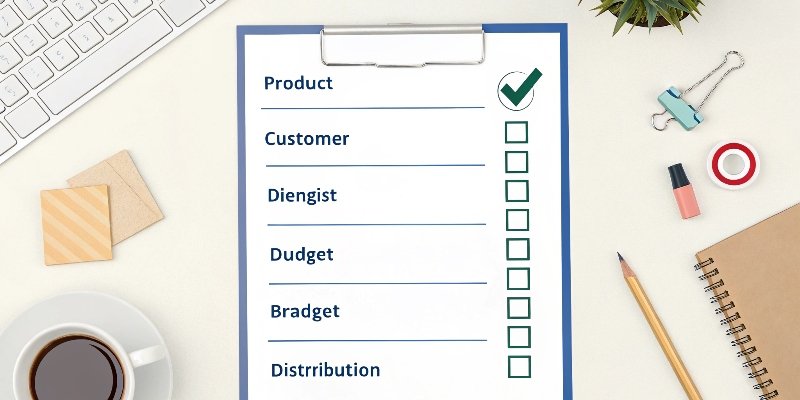
These five points are my go-to checklist before I even sketch a design. They form the creative brief. Let me break them down. First, the Product itself. Is it fragile? Heavy? An odd shape? The packaging must be designed around these physical needs. Second, the Customer. Who are you selling to? A luxury buyer expects a different experience than a bargain hunter. Third, your Brand Identity. The packaging is a key piece of your brand. Its colors, fonts, and materials must be consistent with your other marketing. Fourth, the Budget. This is a hard reality. You need to know your cost-per-unit goal from the start. Finally, the Distribution Method. Will it be sold online and shipped individually, or will it sit on a retail shelf? A box designed for e-commerce needs to be much sturdier than one just for retail display. I remember a project where we designed a beautiful box for retail, but the client later switched to an online-only model. The boxes were getting crushed in the mail. We had to add inserts and over-pack, which ruined the budget3. Planning for distribution from day one is critical.
What are the 7 basic steps to packaging design5?
Have a great packaging idea but feel lost in the process? A lack of clear steps can create chaos. Let's walk through the seven stages of packaging design5.
The 7 steps are: 1. Define Requirements (the brief), 2. Research, 3. Ideation and Sketching, 4. Digital Design and Dielines, 5. Prototyping and Testing, 6. Finalizing Artwork, and 7. Production. Following these steps ensures a structured workflow from concept to completion.
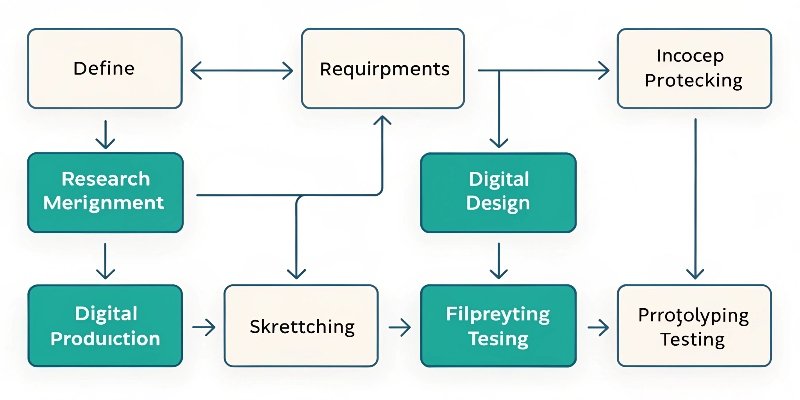
Over my 16 years, I've refined this process to keep projects on track. It works every time. It starts with (1) Defining Requirements—this is your creative brief we discussed earlier. Next is (2) Research: look at competitors, trends, and materials. Then comes (3) Ideation and Sketching, where you let your creativity flow and explore different concepts on paper. After you have a few strong ideas, you move to (4) Digital Design and Dielines. This is where designers like Peter bring the sketches to life in software and create the technical blueprint for manufacturing. The most critical step follows: (5) Prototyping and Testing. You must make a physical sample. Hold it. Test it with the product. See how it feels. After any adjustments, you (6) Finalize Artwork and prepare the files for printing. Finally, it's time for (7) Production, where your design gets manufactured at scale. Skipping any step, especially prototyping6, is a recipe for expensive mistakes. I always tell my team: "Trust the process." It saves time, money, and headaches in the long run.
What are the 6 requirements of packaging?
Wondering what your packaging must achieve to be successful? If it fails these fundamental duties, it's just a pretty box. Let's review the six essential packaging requirements7.
The six core requirements of packaging are: Containment, Protection, Information, Utility, Persuasion, and Legal Compliance. These ensure the package holds the product securely, keeps it safe, tells the customer what they need to know, is easy to use, encourages a purchase, and follows all regulations.
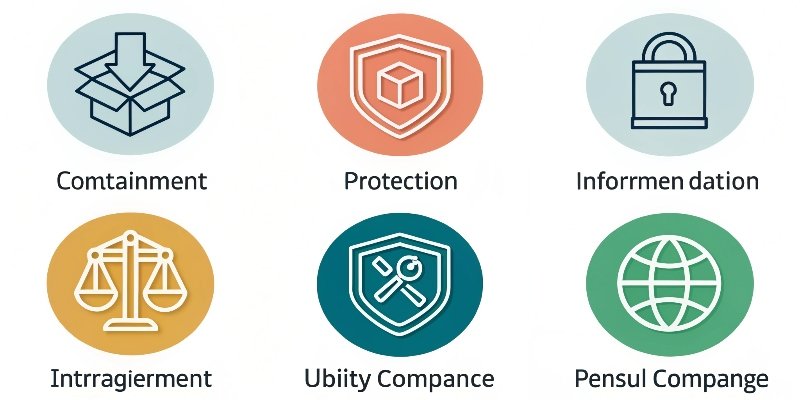
This list gets down to the fundamental jobs of any package. Think of it as a final quality check. I've worked with many product managers who are not designers, and this list helps them understand our work. It goes beyond just looking good. Containment is simple: the package must hold the product. Protection we've discussed, it's about safety. Information is crucial; this includes ingredients and instructions. Utility is about how the customer uses the package—is it easy to open? Can it be re-sealed? Persuasion is the marketing job; it needs to attract the buyer. Finally, and this is a big one, Legal Compliance. This means including things like barcodes and warning labels. A designer once forgot the recycling symbol on a huge order for an eco-conscious brand. It was a costly reprint. These six requirements are non-negotiable for any successful product launch.
| Requirement | Description | My Quick Check |
|---|---|---|
| Containment | Does it hold the product without leaking or breaking? | Can I shake it? |
| Protection | Can it survive a drop or being stacked? | The famous "drop test." |
| Information | Does it say what it is and how to use it? | Can a stranger understand it in 5 seconds? |
| Utility | Is it easy to open, use, and maybe store? | No "wrap rage" allowed. |
| Persuasion | Does it look appealing and represent the brand? | Does it make me want to buy it? |
| Legal | Does it have all the required symbols and text? | Is the legal team happy? |
Conclusion
Choosing the right packaging means balancing protection8, branding, and budget3. By following these structured frameworks, you can create packaging that truly works for your business and connects with your customers.
-
Understanding the 5 P's can guide you in creating effective packaging that meets all essential criteria. ↩ ↩
-
This resource provides a comprehensive checklist to ensure all packaging elements are considered. ↩
-
This resource provides insights on how to effectively manage your packaging budget without compromising quality. ↩ ↩ ↩ ↩
-
Discover how thoughtful packaging design can enhance the overall customer experience. ↩
-
This resource outlines the essential steps in packaging design to streamline your creative process. ↩ ↩
-
Learn about the critical role of prototyping in avoiding costly mistakes during the packaging process. ↩
-
Learn about the core requirements that every packaging design must fulfill for success. ↩
-
Understanding the significance of protection in packaging can help you avoid costly mistakes and ensure product safety. ↩


